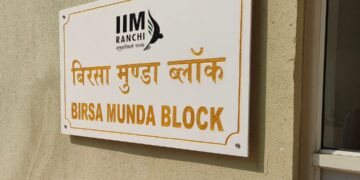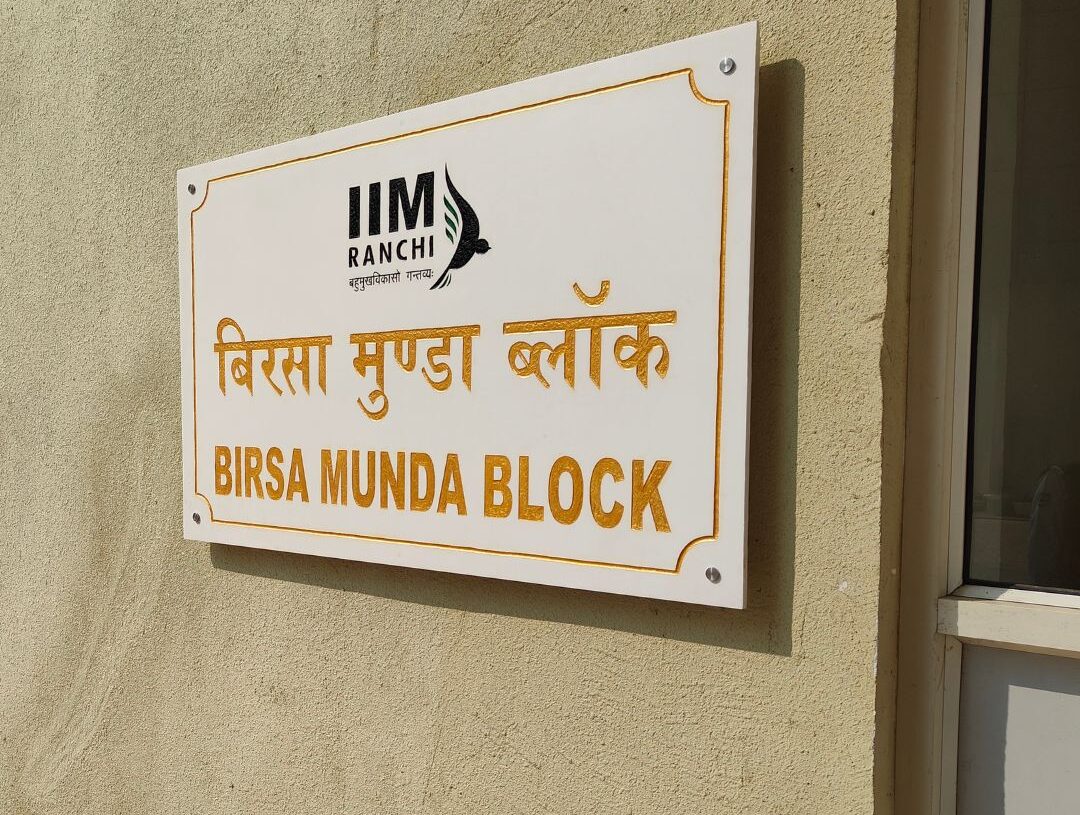PINAKI MAJUMDAR
Jamshedpur, July 2: IIM Ranchi announced the dedication of its administrative, academic and library blocks to tribal freedom fighters, in a nod to India’s storied past and relentless struggle for independence.
Through this initiative, the institute aims to cultivate a profound sense of patriotism and respect for the nation’s heritage among its students and faculty.
Birsa Munda Block
The Birsa Munda Block stands as a tribute to the valiant tribal leader Birsa Munda, who fearlessly led the Munda Rebellion advocating for the rights of the Adivasi community.

Birsa Munda was a tribal freedom fighter and religious leader who played a significant role in the Indian independence movement.
He was born in 1875 in the Chota Nagpur region of present-day Jharkhand. Birsa Munda led a movement against British colonial rule and the exploitation of tribal communities by landlords and missionaries.
He is remembered for organizing tribal people to resist British rule and for promoting indigenous religious beliefs and practices.
Birsa Munda was eventually captured by the British and died in prison in 1900. He is considered a martyr and a hero among tribal communities in India.
Also Read- Stampede at religious gathering in UP’s Hathras claims 27 lives
Nilamber Block and Pitamber Block
Similarly, the Nilamber Block honours Nilamber, a courageous figure in the fight against the British imperialism, while the Pitamber Block celebrates the indomitable spirit of Pitamber, symbolizing the unwavering pursuit of freedom.

Nilamber and Pitamber are remembered for their resistance against the British colonial administration. They fought against the exploitation and injustices faced by the tribal people under British rule.
Their legacy is primarily one of bravery and defiance against colonial oppression. They are often portrayed in folk tales and local folklore as symbols of courage and heroism.

Sidhu Block and Kanhu Block
The Sidhu Block and Kanhu Block pay homage to Sidhu Murmu and Kanhu Murmu, leaders of the Santhal Rebellion who were notable figures in the history of India’s independence movement, particularly in the context of tribal uprisings against British colonial rule in the 19th century.

They led a significant rebellion against the British East India Company’s rule in 1855-1856, known as the Santal Rebellion or the Santal Hool.
The rebellion was a response to oppressive policies and taxes imposed by the colonial administration, which heavily burdened the indigenous people. Siddhu Kanhu’s leadership in the Santal Rebellion has been remembered as a courageous stand against colonial oppression and an assertion of tribal rights and autonomy.
Also Read- Jharkhand News: 12 senior doctors of coal belt felicitated for outstanding services











